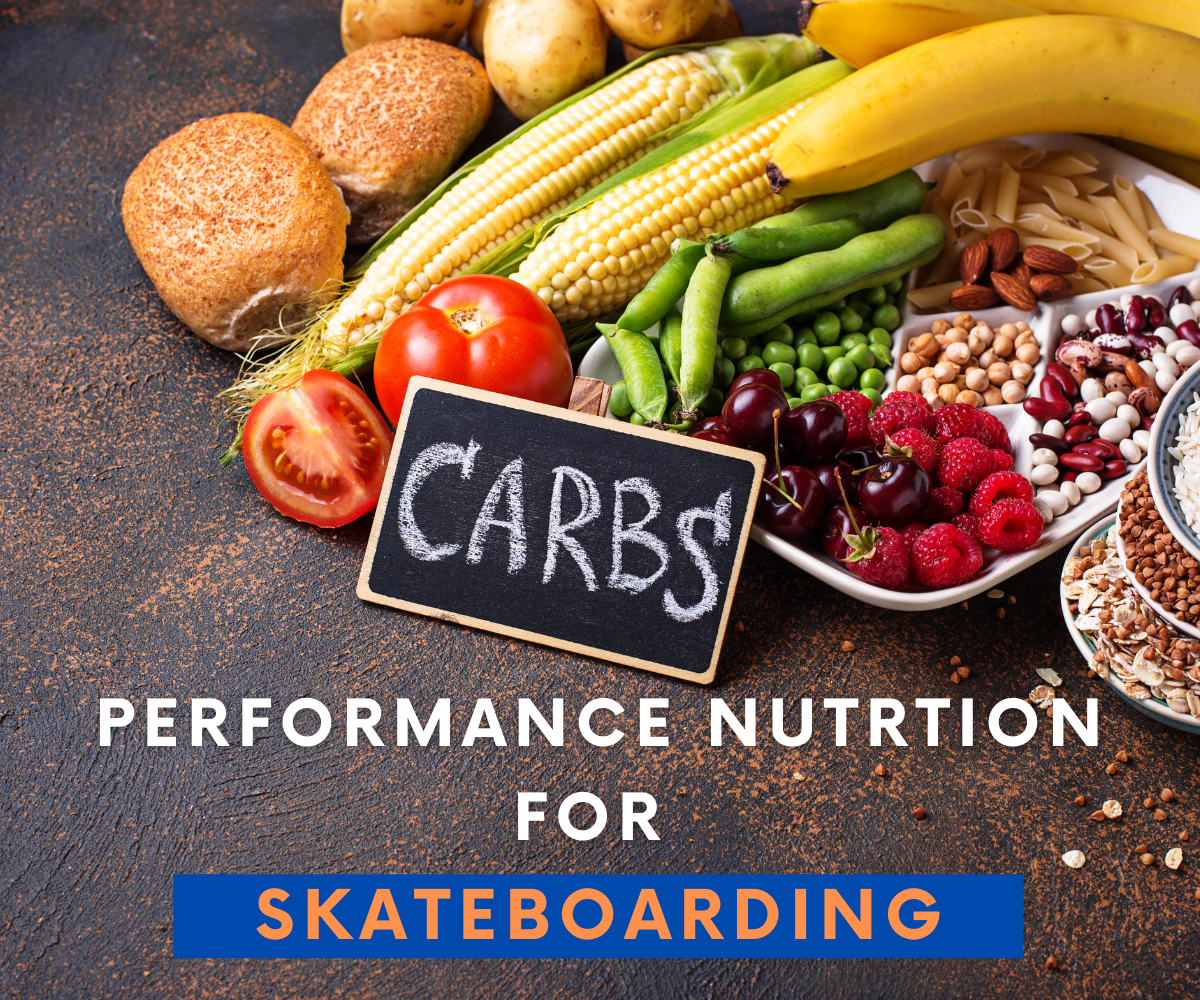For our third instalment of nutritional performance for skaters we’ll get in to the really good (and delicious) stuff. Carbs!
If you don’t like carbs there is a good chance we won’t be friends but most importantly there is an even better chance that your efforts on the board will be greatly hindered in performance. Oats, potatoes, rice, fruit, all the good stuff; whilst they are not essential for survival like proteins and fats, they are used as our primary fuel source.
Carbohydrates and the use of them is where we really begin to separate nutrition for survival and nutrition for performance. In this particular case, performance on the board.
Carbohydrates are the main source of energy for our bodies and our brains to function optimally, especially when you consider the brain primarily runs on sugar which is a form of carbohydrate. Added to this, it is the primary fuel source for:
- Central nervous system – recovering between runs or even between sessions
- Cognition – landing tricks and stringing runs together
- Motor skills – bailing, pop height, quick reaction time all come in to play here
Whilst it comes in at number 3 in importance in this series, we also need to take into account that carbohydrates dictate how the rest of the macronutrients interact. Allow me a brief moment of putting on a lab coat to explain the science behind how this affects our skating:
When we eat carbs, they are digested and broken down into smaller sugar molecules called glucose. These glucose molecules are stored in the liver and muscles as glycogen to be used for fuel during physical activity like skating. This means that our ability to perform well on the board will be greatly dependant on readily available glycogen (carbohydrate) stores to be used whilst we skate to fuel muscle contraction and perform basically anything you will ever do on a skateboard.
Now, skating can be very energy-costly, especially when you consider those big skate sessions that can last multiple hours. As our glycogen stores begin to diminish so does our performance in all the areas we have mentioned above, but here is where shit really hits the fan: Without an adequate amount of stored glucose in the body, other nutrients such as fat or muscle protein are utilized to make energy. Remember in the protein post how we placed an importance on not giving up our hard-earned and much-needed muscle tissue/protein stores? This is yet another reason why fuelling with the correct amount of carbohydrates is so important. It not only allows us to perform well in the moment but also frees up our protein to be able to do its main job of repairing and rebuilding muscle tissue.
So how much carbohydrate do we need?
Unlike protein, carbohydrates have a much larger range of recommended daily dose of 0-4g per pound of body weight per day. This range is so large because everybody’s activity levels are different. For example, we all know that one homie that pops a couple of ollies then sits down for the next few hours, having a chat. Contrast that with the guy who doesn’t stop for 2-3 hours and goes straight savage, and you can begin to see how the two skaters will have vastly different energy requirements.
So, what’s the solution? As usual, there is an element of experimentation and adjustment for each individual, but here are some simple applicable guides for you to follow:
Simply Choose a carbohydrate source from the list below:
Then for portion size we are going to again use our palm as a guide:
Now here are some rough rules to get you started:
- Start by placing a portion size of carbohydrates in the pre and post meal around your skates. This will ensure you maximise performance on the board.
- From there monitor your weight as explained in blog post 1 to ensure you are not exceeding your calorie tolerance.
- If your weight is stable you can continue to experiment by adding more carbohydrates in a few different ways;
- Assuming you have 3 meals a day, add a portion size of carbohydrates to the meal you have yet to add them to
- Add a half-size extra portion to the pre skate meal
- Experiment with adding an easily ingestible carbohydrate snack portion during the skate. Here is where things such as sports drinks, lollies, fruit and anything you can easily get down that does not prove costly in digestion are going to be your go-tos
- Remember choose only one of these at a time and continue to monitor your performance and your weight to track any differences.
- If your weight begins to climb you have reached your tolerance.
- If your weight is stable you can continue to experiment with one of the above interventions and monitor your skate performance to track any effects.
Stay tuned for the 4th instalment of this series where we cover the last macronutrient: Fats.
For an easy to use guide with complete video demos on how to change nutrition for performance or weight loss be sure to check out the SS Fundamentals Program: https://skateboardstrength.com/fundamentals/

